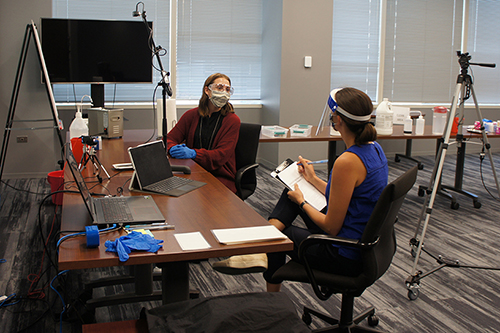I recently attended a conference on human factors and medical devices. In one session, on the topic of moderating usability test sessions, the speaker used the phrase “Be the student” to describe the attitude the moderator should have when conducting this type of research. That is, while the participant is interacting with the device / app / website for likely the very first time and attempting to learn it, we, as moderators, should also be of the mindset to learn (not teach, or assume) about the participant-stimuli interaction for the first time.
This led to me to think about some of the other tips that we give to our UX researchers when we conduct moderation training:
 1. Flip questions back to the participant – I think I’ve used this tactic in just about every session I’ve ever moderated. The participant will invariably say something to the effect of, “I’m not sure how to do this; am I doing this right?” or “This feature should be changed, don’t you think?” And in every one of those cases, the question should be flipped right back to the participant with the moderator replying, “What do YOU think?
1. Flip questions back to the participant – I think I’ve used this tactic in just about every session I’ve ever moderated. The participant will invariably say something to the effect of, “I’m not sure how to do this; am I doing this right?” or “This feature should be changed, don’t you think?” And in every one of those cases, the question should be flipped right back to the participant with the moderator replying, “What do YOU think?
2. Use the participant’s terminology – when conducting a study on, for example, a syringe, I’ve seen participants refer to the flanges as the “finger grippers” or even “grippies.” Rather than correct the participant by informing them that they are using the wrong term, the moderator should adopt that term for the rest of the session when discussing the syringe and the process of the injection. This can apply to parts of a website or device or app where we, as the researchers, know the proper engineering or designer jargon, however, when talking with participants, we should be using the words they use.
Leave questions open-ended:
3. Avoid yes/no questions. This is a basic tip for new moderators but it’s still very important. Simple, yes/no questions elicit simple yes/no answers. As qualitative researchers, we’re interested in the WHY and the HOW, so questions need to be crafted to go beyond the yes and no and get to the why and how.
4. Avoid baking the correct / preferred answer into the question. Instead of saying, “I noticed you did x instead of y” (which clearly states what you wanted the participant to do), say something along the lines of “I noticed you did x, tell me what you expected to happen when you did that.” This leaves the participant free to explain what they did rather than justify why they didn’t do what you were hoping for them to do.
All of this is to establish that the participant is the expert; not the moderator. Hence “Be the student.” The moderators are there to learn from the participants. And the participants are there to show us how the device should be used or at the very least, how they expect it to be used.
